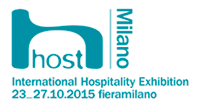An all-Italian study that has lasted a good six years – financed by illy and Lavazza and carried out by universities in Padua, Trieste and Udine (Mixer May 2014) – has for the first time allowed the DNA of arabica coffee to be sequenced.
Thanks to having singled out the genome, it will now be possible to recognize the genes that allow the coffee plant to be resistant to disease and to adapt to unfavourable climatic conditions. This will allow it to take on the negative effects of global warming, which are really sending coffee-producing areas like Brazil and Central America into a crisis.
Thanks to the decoding of the DNA, biodiversity can be stimulated via natural techniques. This will allow for – via the selection of the plant – the increase in the intensity of specific aromas and the decrease in the level of caffeine, which can be reduced or completely eliminated without using chemical extraction techniques. In the future, we will probably see a more varied selection, and some experts and coffee tasters are already talking about “terroirs” like with wines.
The growth in the pleasure of tasting coffee is, in fact, a key factor in the world of coffee right now. This is a phenomenon that, paradoxically, seems to be growing more abroad where consuming an espresso is something trendy and a status symbol, and where there’s a growing culture of espresso being seen as being cosmopolitan. This doesn’t exist in Italy where the espresso coffee continues to be seen as more or less “an everyday beverage” that is quite simple, making it therefore a “commodity.”
Despite the great efforts that all of the leading companies in the industry are putting forth in terms of training baristas, there seems to be a “break” in the value chain that goes from the roaster to the end client, and from the makers of espresso machines to retail businesses. Only now is this gap starting to be filled thanks to more widespread use, even in Italy, of new formats that are more geared toward the customer experience.
Could a solution to this “break in the chain” be to more directly involve the customer? In a recent meeting organized by SCAE – the Speciality Coffee Association of Europe (a partner of Host 2015), Luigi Morello SCAE Director/Event Committee Chair and export director of Cimbali spoke of the evolution of this concept.
“We are helping ‘migrate’ the espresso machine from the back of the bar area where the barista prepares the coffee with his back to the customer to the counter where he prepares it in front of him instead. The customer feels more involved in the espresso experience, experience the preparation of it ‘live’ and seeing the machine as an essential part of the coffee bar experience and not just as a tool.”
Competitiveness and sustainability
Maurizio Giuli, president of UCIMAC (the Italian association for espresso machine makers) and marketing director of Nuova Simonelli along with Federica Pascucci, an economics and management professor at the Università Roma Tre, have also taken on this topic in the recently published book called “Il ritorno alla competitività dell’espresso italiano” (The return of competitiveness in Italian espresso).
The book also takes on topics of innovation and technological evolution. Giulia speaks to this by saying “The objective that professor Pascucci and I wanted to take on was to offer a valid contribution to the relaunch of the competitive ability of the espresso coffee system in Italy.
This offers deep, detailed analysis, but in our opinion, it will have real value if it helps stimulate serious, constructive debate among all of the coffee professionals in Italy. The competitive future of companies in the industry depends on this debate and from the concrete results that will come out of it.
Therefore, we hope that this leads to a path of analysis, debate and choices that involves all of the key players – individuals, companies, associations, trade fair organisations, the press all the way to universities – in such a way as to put the energy and resources needed back in motion and to bring new life blood to the industry, which if it is able to reinvent itself, can profit from the many opportunities it has before it.


















